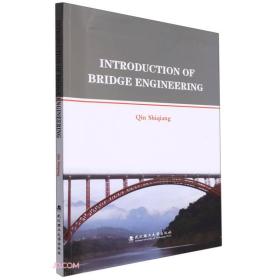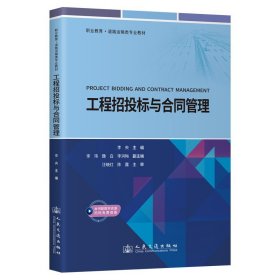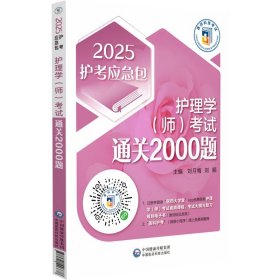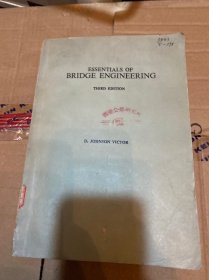
桥梁工程概论(英文版)
全新正版未拆封
¥ 26.28 5.5折 ¥ 48 全新
仅1件
四川成都
认证卖家担保交易快速发货售后保障
作者秦世强 编
出版社武汉理工大学出版社
出版时间2022-05
版次1
装帧平装
上书时间2023-05-29
- 最新上架
商品详情
- 品相描述:全新
图书标准信息
- 作者 秦世强 编
- 出版社 武汉理工大学出版社
- 出版时间 2022-05
- 版次 1
- ISBN 9787562965206
- 定价 48.00元
- 装帧 平装
- 开本 16开
- 页数 256页
- 字数 664.000千字
- 正文语种 英语
- 【内容简介】
- 本教材是为来华学习土木工程专业的外国留学生编写的。桥梁工程指桥梁勘测、设计、施工、养护和检定等的工作过程,以及研究这一过程的科学和工程技术,它是土木工程的一个分支。本教材共9章,包括桥梁结构总体规划设计、桥梁设计行动、混凝土梁桥等部分。
- 【目录】
-
Chapter 1 Overview
1.1 Development of Bridge Engineering
1.1.1 The main stages in bridge development
1.1.2 Bridge development in western countries
1.1.3 Bridge development in China
1.1.4 Typical bridge structures
1.1.5 Future outlook
1.2 Basic Composition and Classification of Bridge Structure
1.2.1 Basic composition
1.2.2 Classification of bridge structure
Chapter 2 Overall Planning and Design of Bridge Structures
2.1 Basic Principles for Bridge Design
2.2 Bridge Design Specifications
2.3 Plane,Elevation and Section Design of Bridge Structure
2.3.1 Plane layout
2.3.2 Elevation design
2.3.3 Section design
2.4 Procedure for Bridge Design and Construction
2.5 Comparison of Bridge Design Project
Chapter 3 Bridge Design Actions
3.1 Action
3.1.1 Action representative value
3.1.2 Action classification
3.2 Action in Specifications
3.2.1 General Code (JTG D60-2015)
3.2.2 AASHTO LRFD (2017)
3.2.3 Railway Bridge Code (TB 10002-2017)
3.3 Combination of Action Effect
3.3.1 General Code (JTG D60-2015)
3.3.2 AASHTOLRFD(2017)
3.3.3 Railway Bridge Code (TB 10002-2017)
3.4 Summary
Chapter 4 Bridge Deck Structure
4.1 Composition and Layout of Bridge Deck Structure
4.2 Bridge Deck Pavement, Drainage and Waterproof System
4.3 Expansion Installation
4.4 Bridge Deck Accessory Structure
Chapter 5 Concrete Girder Bridge
5.1 Structural Characteristics of Concrete Simply-supported Girder Bridges
5.1.1 Cross section type
5.1.2 Girder segment division
5.1.3 Structural arrangement
5.1.4 Structure detail of reinforcement
5.2 Design and Calculation of Concrete Simply Supported Girder Bridge
5.2.1 Calculation of the carriageway slab
5.2.2 Calculation of load transverse distribution
5.2.3 Calculation of the main beam
5.3 Concrete Continuous System Beam Bridge
5.3.1 General arrangement and construction characteristics
5.3.2 Design outline
5.4 Design of a Concrete Simply Supported T-girder Bridge
5.4.1 Design task
5.4.2 Dimensions of the T-girder
5.4.3 Internal force of the main girder
5.4.4 Internal force of carriageway slab
5.4.5 Internal force of diaphragm
5.4.6 Design reference data
Chapter 6 Arch Bridge
6.1 Introduction of Arch Bridge
6.1.1 Basic characteristics and application scope of arch bridge
6.1.2 Composition and main types of arch bridges
6.2 Overall Layout and Design Method of Arch Bridge
6.2.1 Determination of the bridge length and number of spans
6.2.2 Determination of the design elevation and rise-span ratio
6.2.3 Selection of arch axis
6.2.4 Design method of continuous arch bridge with unequal span
6.3 Structural Characteristics of Simple System Arch Bridge
6.3.1 Structural characteristics of the main arch
6.3.2 Spandrel structure
6.3.3 Other structure details
6.3.4 Design of haIf-through and through concrete arch bridge
6.4 Structural Characteristics of Composite System Arch Bridges
6.4.1 Integral arch bridges
6.4.2 The beam-arch composite system arch bridge
6.4.3 Basic composition and structure of the composite system arch bridges
6.5 Construction Method of Arch Bridge
6.5.1 In-situ casting method
6.5.2 Prefabricated installation method
6.5.3 Rotation construction method
6.5.4 Steel tube reinforced concrete strength framework construction
6.6 Future Developments of Arch Bridge
6.6.1 Construction
6.6.2 Technology development
Chapter 7 Cable-stayed Bridge
7.1 General Layout of Cable-stayed Bridge
7.1.1 Overview
7.1.2 Main structural system
7.1.3 The layout of span
7.2 Structural Characteristics of Cable-stayed Bridge
7.2.1 The structure of girder
7.2.2 Pylon
7.2.3 Stayed cable
7.3 Cons
点击展开
点击收起
相关推荐
— 没有更多了 —




















以下为对购买帮助不大的评价